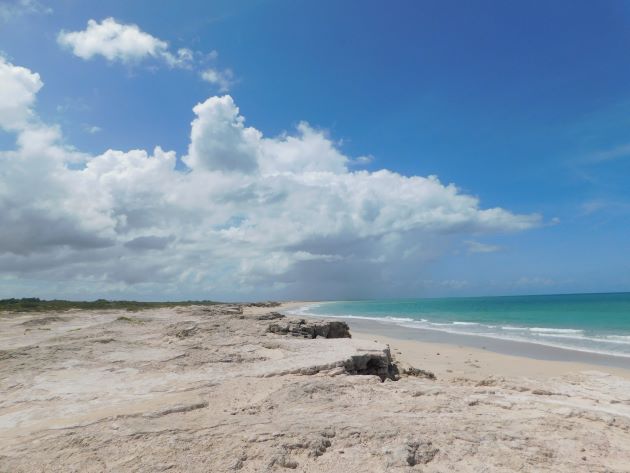
At this time of year in Broome we regularly encounter isolated showers and they can be torrential, but they may only be over a small area. It might be raining at home, but go one kilometre away and it is dry or vice versa. The Bureau of Meteorology rain gauge in Broome is at the airport and the readings from the gauge can be quite different to another rain gauge a few kilometres away. Last Saturday morning it was pouring with rain at home, but we decided to risk going for a beach walk about ten kilometres up the coast towards Willie Creek south side. It looked like a typical isolated shower!
We drove through torrential rain to get to the parking area on the cliff-tops and it was dry when we got there. The header photo shows the rain over Broome, which landed in our rain gauge, but not the rain gauge at the airport! It did look like we might be risking getting wet, so I put a large umbrella in my backpack and off we went north. The tide had just turned and the sea was rough, so there were a lot of creatures washed up. We soon encountered several creatures that reminded us that you should not dip your feet in the Indian Ocean at this time of year. Irukandji jellyfish are a threat, but you are unlikely to see those due to their size. The creatures that we observed were clearly visible on the sand.
The first blue-bottle jellyfish did not have visible tentacles, but then we observed one with a very impressive long tentacle over 30cm long.
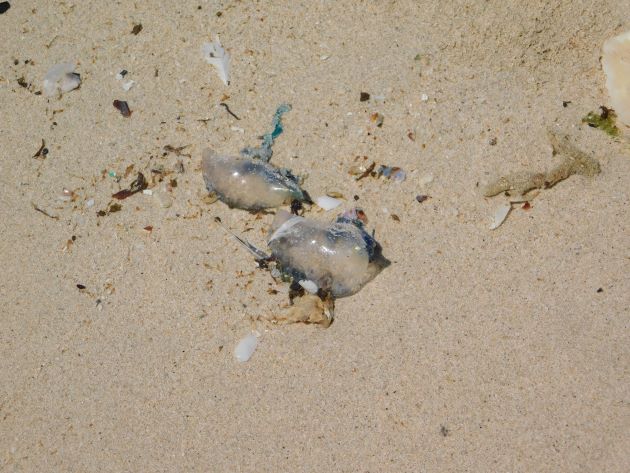
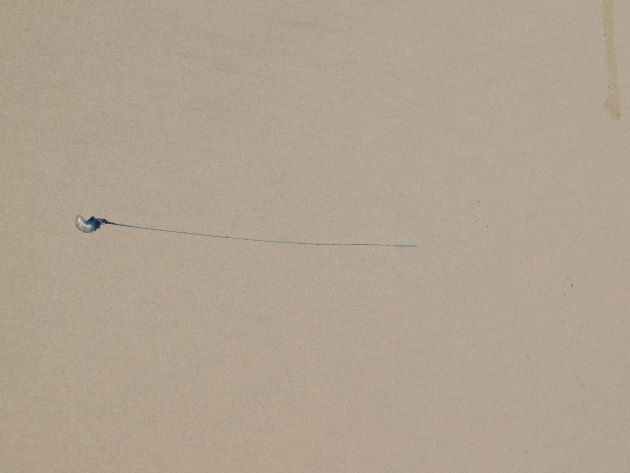
Blue-bottle jellyfish
There were various other jellyfish that were the size of dinner plates and other smaller “jellies” that may have been egg sacs rather than jellyfish.
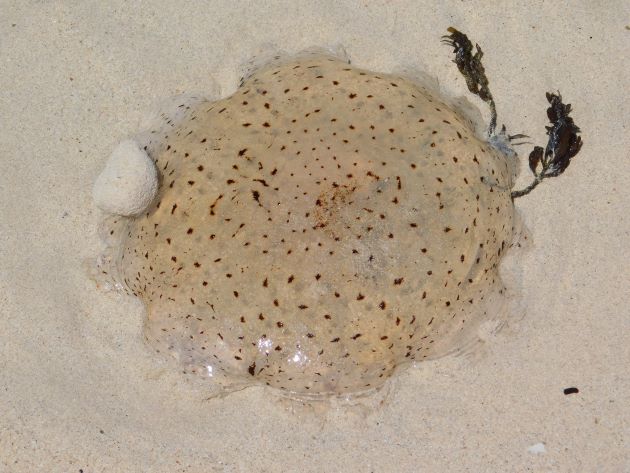
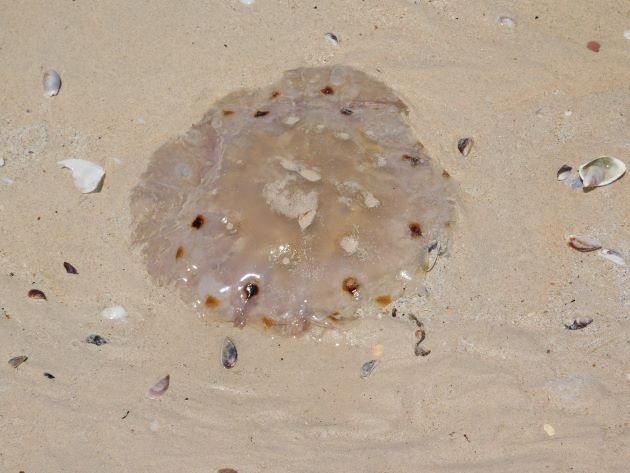
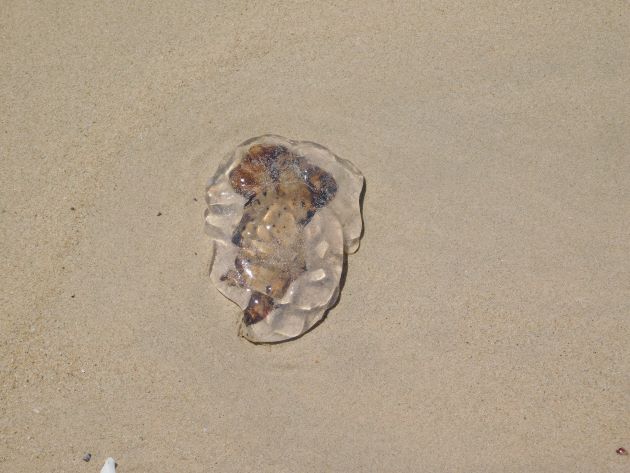
Jellyfish
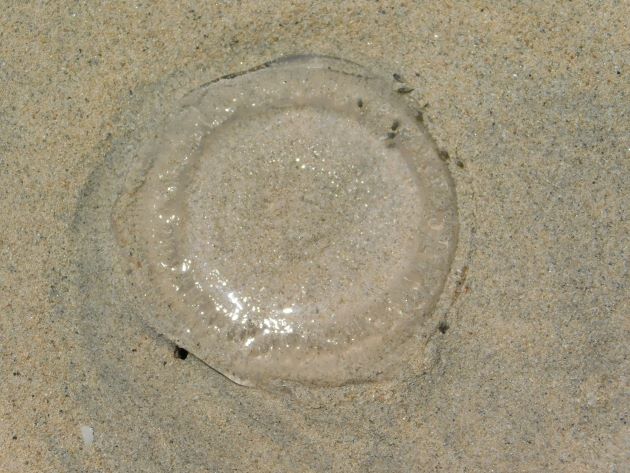
Possible egg sac
The prettiest creatures washed up on the beach were the Porpita porpita, which are button sized creatures with a bright colour and tentacles. Many of the turquoise tentacles were washed up along the high tide line.
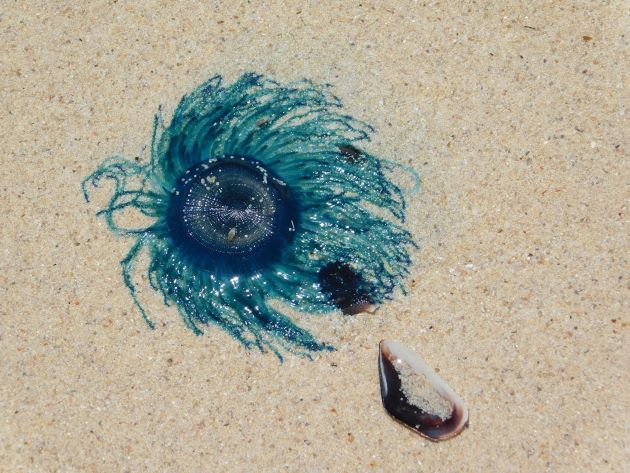
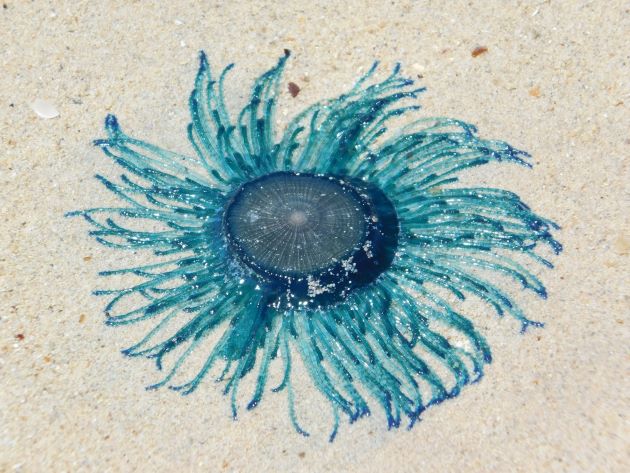
Porpita porpita
We came across a sea snake in a knot, which appeared to not be able to get back to the sea during a rapidly falling tide. Grant carefully used a stick and it unknotted itself and when he placed it back in the ocean it swam off strongly. We had not encountered a sea snake in a knot before and according to this article the sea snakes need to knot themselves frequently to get rid of parasites and to shed their skins every couple of weeks. The sea snake was roughly 60cm long once it was straight again.
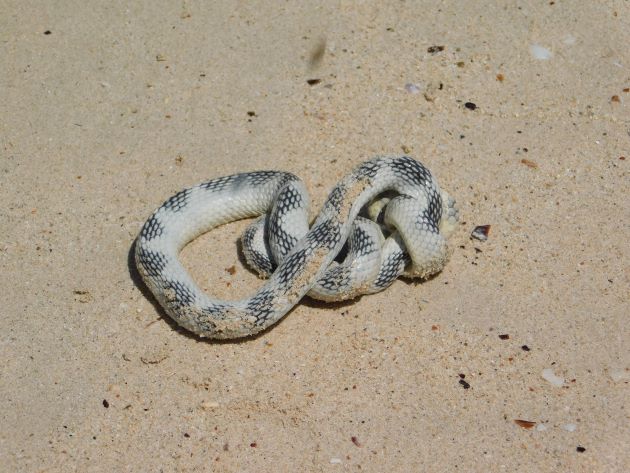
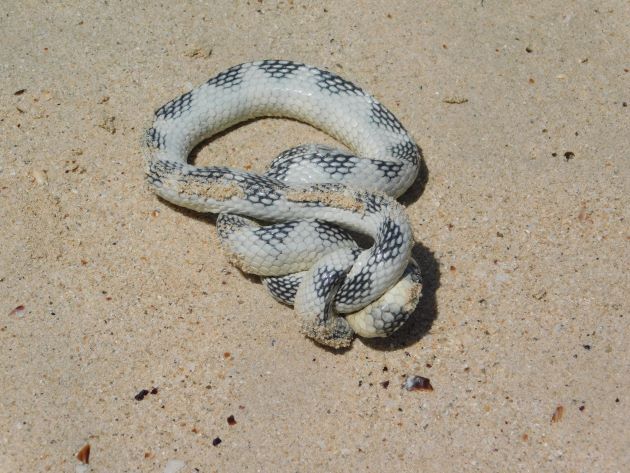
Sea snake in a knot
You could tell that the ocean had been rough recently by other items washed up like sea sponges.
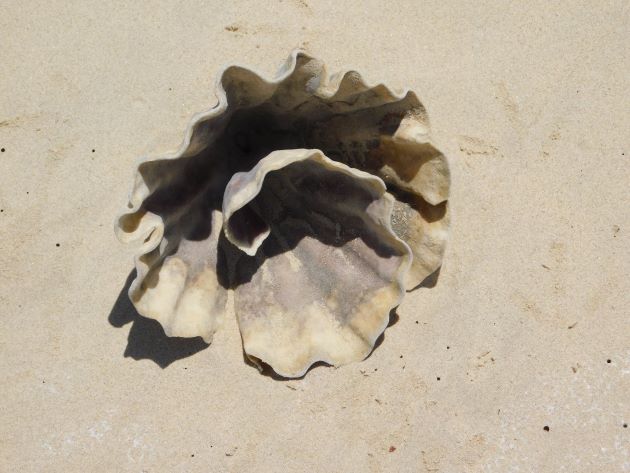
Sea sponge
There were no end of mud whelks on the move as the tide receded and although they are supposedly edible we do not eat them! They were mostly 10cm long.
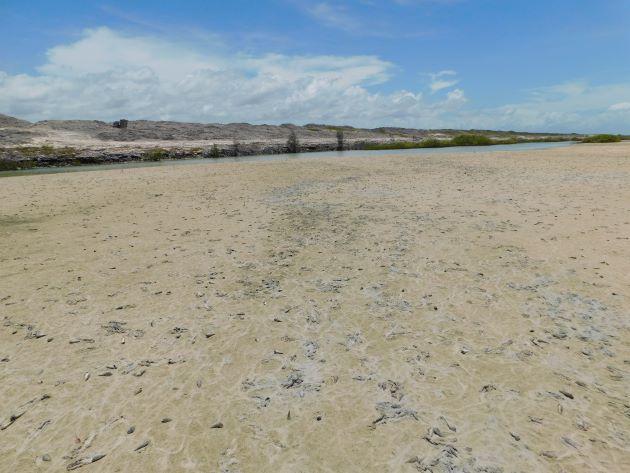
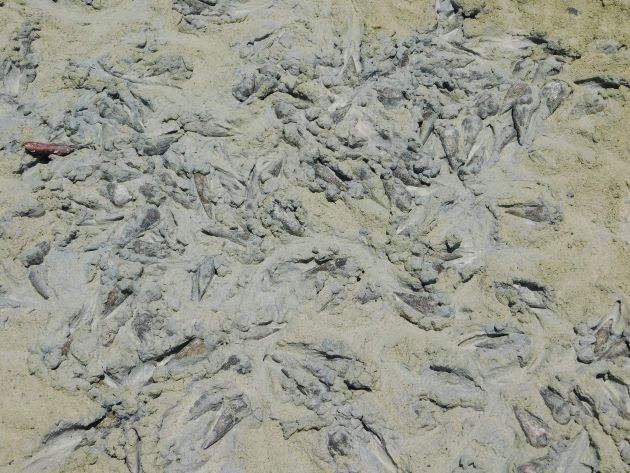
Mud whelks
The tide was receding fast and that gave us a good opportunity to walk north and observe the resident and migratory birds. You might not think of an Australian Pipit as being a bird that you would encounter on the beach, but it is common on this section of beach. They could hide in the rocks and get protected from rain or the heat of the day, but we continued north with our umbrella!
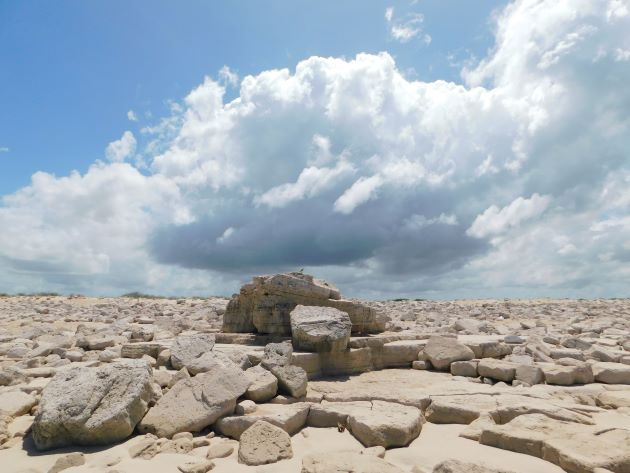
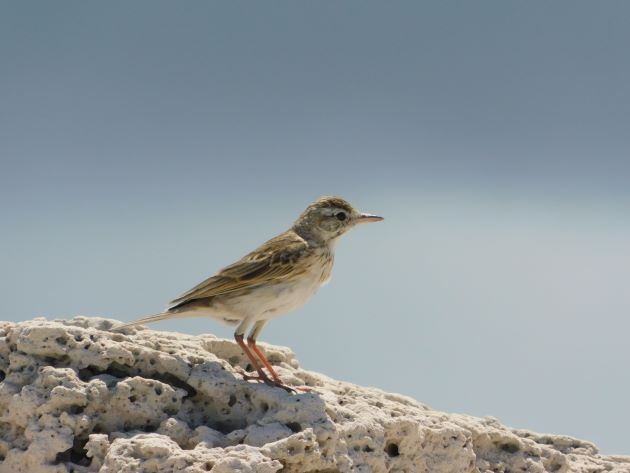
Australian Pipit watching an isolated shower from the top of a rock
We could easily walk north without disturbing the birds. There were 30 Sooty Oystercatchers and 30 Pied Oystercatchers in two separate flocks. The two species of Oystercatcher are not breeding at this time of year and often congregate together. There is plenty of food once the reef is exposed when the tide falls and they often just wander about on the beach until they can return to feed. The Oystercatchers tend to prefer to walk rather than fly and will just walk ahead of you as you wander up the beach.
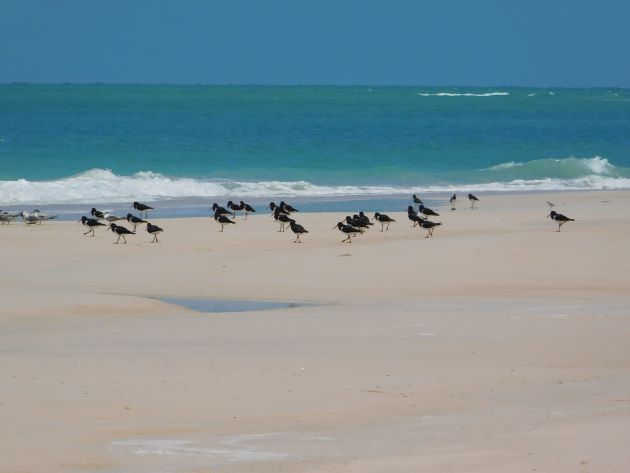
Pied Oystercatchers
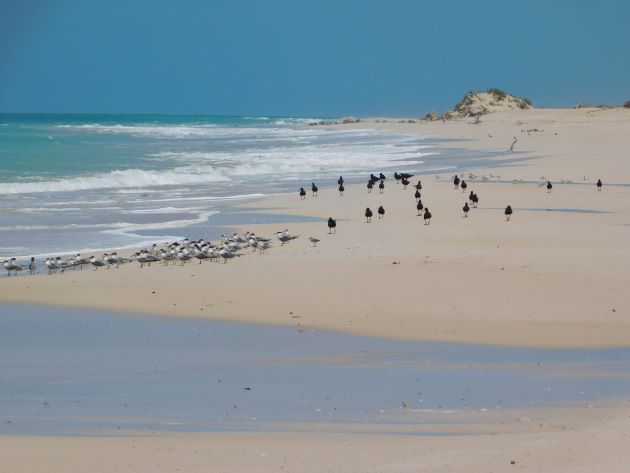
Sooty Oystercatchers wandering up the beach
Due to the reef being underwater most of the shorebirds were roosting and we could walk around them, so they could continue to relax. The Crested Terns are the most nervous and take flight on some occasions, but generally you can walk by at the high tide line and leave the shorebirds roosting.
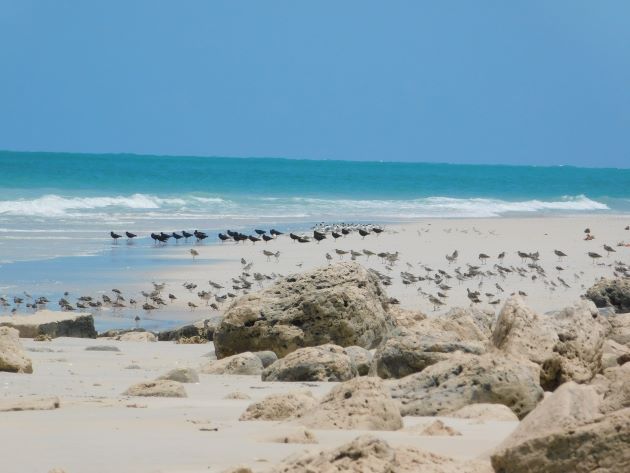
Shorebirds roosting waiting for the tide to drop
The shorebirds present were Sanderling, Grey Plover, Ruddy Turnstone, Great Knot, Greater Sand Plover, Lesser Sand Plover, Grey-tailed Tattler, Bar-tailed Godwit, Red-necked Stint, Common Sandpiper, Whimbrel and Red-capped Plover. There were also Brown Booby feeding at sea and Little Terns, Crested Terns, Lesser Crested Terns, Common Terns, Gull-billed Terns and Silver Gulls. The grey morph and white morph of Eastern Reef Egret moved onto the sandstone cliffs until the tide dropped enough to return to the reef to feed.
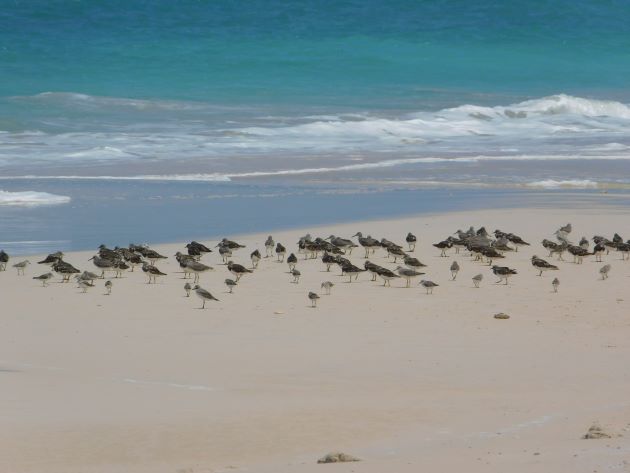
Small flock of shorebirds
We did walk all the way to the south side of Willie Creek and we watched the surrounding isolated showers, but I carried that large umbrella for three hours and did not need it. It was good insurance to make sure it did not rain! Over the many years that we have lived in the north of Australia we have learnt to not be deterred by isolated showers. However, had there been lightning involved we would not have been out exposing ourselves to that risk!


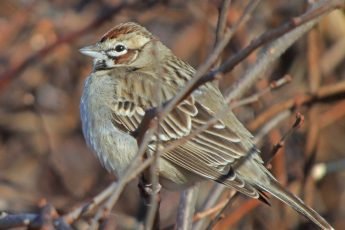


 New writers welcome – please contact us for details.
New writers welcome – please contact us for details.

















Fascinating, Clare, to read your descriptions and see your photos from your unique part of the planet. Thank you! Ruth
Thanks, Ruth.